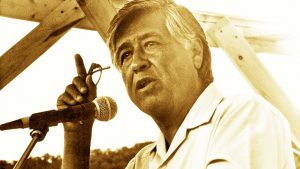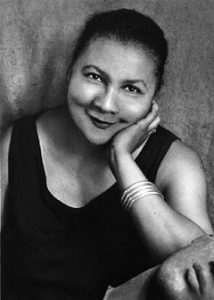Amplifying Student Voice
“In education, student voice refers to the values, opinions, beliefs, perspectives, and cultural backgrounds of individual students and groups of students in a school, and to instructional approaches and techniques that are based on student choices, interests, passions, and ambitions. Generally speaking, student voice can be seen as an alternative to more traditional forms of governance or instruction in which school administrators and teachers may make unilateral decisions with little or no input from students.”
—Glossary of Education Reform, www.edglossary.org
“Students must have initiative; they should not be mere imitators. They must learn to think and act for themselves, and be free.”
—Cesar Chavez
Pedagogy of Confidence: Amplifying Student Voice
Situating Learning in the Lives of Students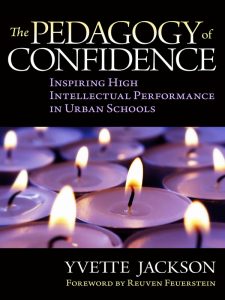 Amplifying Student Voice, framed by High Operational Practices for High Intellectual Performance, are the fulcrum around which the “gifted” education of the Pedagogy of Confidence revolves, gearing the objectives for each practice to facilitate students exploring and acting on their potential to produce the high intellectual performances that can motivate self-directed learning, self-actualization, and self-transcendence. The inherent strategies and actions used to identify and build on strengths, provide enrichment and create schema that connects to a student’s cultural frame of reference inherent in “gifted education” serve to enhance comprehension that results in strengthened competence, confidence, resilience and high intellectual performances (Jackson, 2017).
Amplifying Student Voice, framed by High Operational Practices for High Intellectual Performance, are the fulcrum around which the “gifted” education of the Pedagogy of Confidence revolves, gearing the objectives for each practice to facilitate students exploring and acting on their potential to produce the high intellectual performances that can motivate self-directed learning, self-actualization, and self-transcendence. The inherent strategies and actions used to identify and build on strengths, provide enrichment and create schema that connects to a student’s cultural frame of reference inherent in “gifted education” serve to enhance comprehension that results in strengthened competence, confidence, resilience and high intellectual performances (Jackson, 2017).
www.pedagogyofconfidence.net
On This Page
- The Purpose and Process
- Examples for Elementary, Middle School, High School, and University
- Example 1: Installations on student interests in NPS high schools
- Example 2: Creating PSA’s of things that matter to the students in NPS high schools
- Example 3: Developing surveys on things that matter to the students
- More examples to use and develop ideas from
Purpose
Amplifying Student Voice focuses students on exploring, understanding and collaboratively sharing the purpose and methods of equity consciousness with peers as learners across all content areas. Amplifying Student Voice will use the critical thinking tools (HOPs) being implemented with the teachers to support student engagement.
Examples of Student Voice Collaborations
Each of the examples below include an outline explaining the process, along with video when it has been documented.
- Example 1 in Multiple Redwood City School District CA Elementary Schools and Newark NJ Public High Schools: Using High Operational Practices to facilitate student depth of understanding, with their frame of references leading to student installations.
- Example 2: Mini video productions (Similar to Public Service Announcements) on topics developed and created by students on issues that matter to them.
- Example 3: Students learn and create surveys including development from their frame of reference, demographics, implementation and using results for pro-active positive outcomes with equity consciousness.
- Example 4: Students develop examples of media from their cultural frame of reference.
- Example 5: Students develop documentaries from their cultural frame of reference.
- Example 6: Students use art to explore their ideas.
- Example 7: Landmarks of a Generation
- Example 8: Documenting the School as a Reflective Process
- Example 9: When Students Become Teachers; Students and Teachers Professional Development Together
- Example 10: Students as Leaders of Change
Example 1
“There must exist a paradigm, a practical model for social change that includes an understanding of ways to transform consciousness that are linked to efforts to transform structures.”
― Killing Rage: Ending Racism
Using High Operational Practices to facilitate student depth of understanding, with their frame of references leading to student installations.
The sessions always begin with, and include within, community building exercises to facilitate student’s voices being individual and as a collaborative effort. Their cultural frame of reference is about relevancy and equity consciousness. The processes in the video clips below (Elementary, Middle School and High School Students):
- Community Building Exercises
- Powerful Questions (e.g. on ‘social justice’)
- Inductive Categorization of their Questions (modeled with a small group, then all do in small groups)
- Defining in Context with a Circle Map (Thinking Map®) for organizing thinking with the Frame of Reference) things that matter to the students. The frame of reference expands on the why and the how.
- Creating an installation at the school
- First the students are modeled with only using a pad of sticky notes, and writing utensils
- In modeling we pick one idea, consider locations to post and then dialogue how we might post an installation to have our message seen and heard
- It is helpful to model in the location of the modeling
- In small groups each group creates an installation on a social justice issue (if that is the initial powerful questions topic) that matters to them
- Installing the installations
- Gallery walk with the whole group to all the installations following the protocol:
- The creators of the installation provide a brief overview
- Positive observations
- Questions
- Next installation
Elementary School and Middle School
More Examples for Redwood City School District
High School
More Examples for Newark Public Schools High Schools
Example 2 – Mini Video Productions (PSAs – Public Service Announcements)
“The ends you serve that are selfish will take you no further than yourself but the ends you serve that are for all, in common, will take you into eternity.”
―
Mini video productions (similar to Public Service Announcements) are on topics developed and created by students on topics that matter to them. The goal with ‘mini video productions’ is putting a focus on how to create a very short video on things that matter to the students. The process includes:
Example 3
Students learn and create surveys including development from their frame of reference, demographics, implementation and using results for pro-active positive outcomes with equity consciousness.
Amplifying Student Voice – Survey and More — November – December 2021
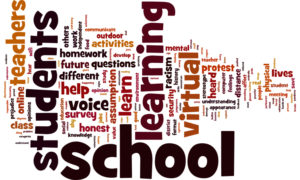 The Amplifying Student Voice goes virtual with students facilitated in multiple sessions with their voices on equity, virtual learning and the quality of their education a focus. Their learning and questions have included survey with their voices that is being implemented in December 2020 and January 2021. The video below provides a view of the sessions of with the students. Download the accompanying PowerPoint used with the students.
The Amplifying Student Voice goes virtual with students facilitated in multiple sessions with their voices on equity, virtual learning and the quality of their education a focus. Their learning and questions have included survey with their voices that is being implemented in December 2020 and January 2021. The video below provides a view of the sessions of with the students. Download the accompanying PowerPoint used with the students.
Facilitator and film editor: Robert Seth Price, NUA Senior Scholar; Linda Montes – RCSD Assistant Superintendent; Maria Sudduth – NUA Project Director: Whitney Eakin, Niffa Zuno – RCSD Coaches: Jesse Silverman, Art Educator; Stefanie Rome – NUA Senior Scholar.
Student Voice – HOPs with Surveys
Newark Public Schools, NJ High School – February 2021
PowerPoint presentation used for an interactive 90 minute sessions with Bard High School student groups. There were two sessions using NUA HOPs with critical thinking tools to explore their ‘voice’ leading to the importance (and doing) the creation of surveys learning that development guides the perspective.
- grade 9-10 (130 students and seven observing educators)
- grade 11-12 (70 students and seven observing educators)
Example 4
Students develop examples of media from their cultural frame of reference.
This example has students exploring the impact of vocabulary and images are impacted by dominant histories. This explores both the text and use/non-use of images. The first example comes from multidisciplinary artist Alexandra Bell:
Alexandra Bell is a multidisciplinary artist who investigates the complexities of narrative, information consumption, and perception. Utilizing various media, she deconstructs language and imagery to explore the tension between marginal experiences and dominant histories. Through investigative research, she considers the ways media frameworks construct memory and inform discursive practices around race, politics, and culture. In her current series, Counternarratives, Bell edits New York Times articles, altering headlines, changing images, and redacting text to reveal oppressive patterns in news reportage and society at large. Her work has been exhibited at MoMA PS1, We Buy Gold, Koenig & Clinton Gallery, the Nathan Cummings Foundation, Atlanta Contemporary, and Usdan Gallery. Bell holds a BA in interdisciplinary studies in the humanities from the University of Chicago and an MS in journalism from Columbia University. She lives and works in Brooklyn, New York.
ReWriting the Headlines from Our Perspectives
Using the video by Alexandra Bell
- Watch the video of the artist Alexandra Bell (below)
- Discuss
- Read a Story in from an Online News Source
- Mark up like the artist Alexandra Brown
- Create a new headline
- Post your new headline (online or in a physical space)
What is Seen and Not Seen: Where is Our History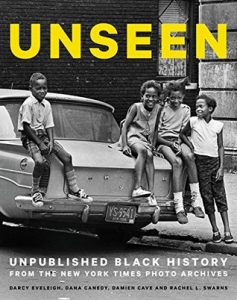 Hundreds of stunning images from black history have long been buried in The New York Times archives. None of them were published by The Times–until now. UNSEEN uncovers these never-before published photographs and tells the stories behind them. This is not exclusive the The New York Times archives — this is how dominant history dominates the way history is seen.
Hundreds of stunning images from black history have long been buried in The New York Times archives. None of them were published by The Times–until now. UNSEEN uncovers these never-before published photographs and tells the stories behind them. This is not exclusive the The New York Times archives — this is how dominant history dominates the way history is seen.
Using the book Unseen:
- Use one photo in the book and text
- Respond to the scenario
- Recreate in a current scenario
An example from the book Unseen is the image and text below from Unseen:
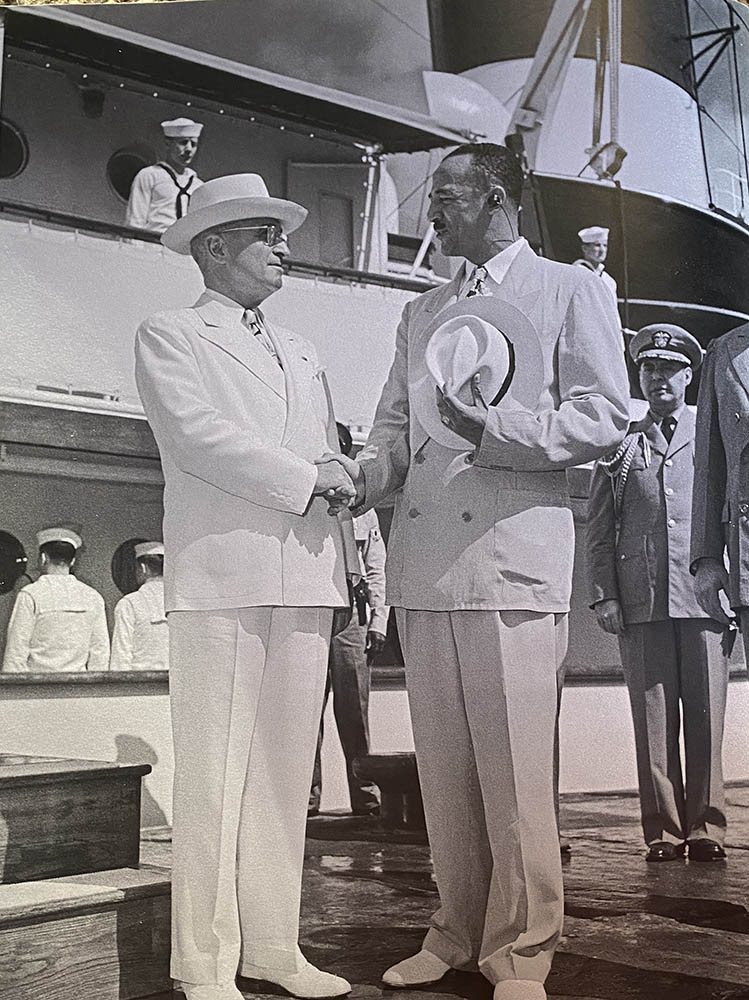

Read the last sentence about the image at the left was not published, instead one of the men not shaking hands was published.
Example 5
Students develop documentaries from their cultural frame of reference.
Documentaries
The following three videos document sixth grade students at Roosevelt Elementary School in North Long Beach, CA documenting what is important to them at their school. This was after the school was documented about their implementation of Thinking Maps throughout the whole K-6 school.
What is Seen and Not Seen: Where is Our History Hundreds of stunning images from black history have long been buried in The New York Times archives. None of them were published by The Times–until now. UNSEEN uncovers these never-before published photographs and tells the stories behind them. This is not exclusive the The New York Times archives — this is how dominant history dominates the way history is seen.
Hundreds of stunning images from black history have long been buried in The New York Times archives. None of them were published by The Times–until now. UNSEEN uncovers these never-before published photographs and tells the stories behind them. This is not exclusive the The New York Times archives — this is how dominant history dominates the way history is seen.
Using the book Unseen:
- Use one photo in the book and text
- Respond to the scenario
- Recreate in a current scenario
An example from the book Unseen is the image and text below from Unseen:
Example 6
Students use art to explore their ideas.
Example 7
Landmarks of a New Generation
Getty Museum
Description
 What is the rationale for conservation in a world driven by change, by an astronomical energy to produce, consume, and develop, then destroy the old to make room for the new? What is the value of place and permanence to an increasingly mobile citizenry with mixed ethnic and cultural identities and cross-historical memories? Should conservation move from being object or site-specific to being human-sensitive? Should it shift its mental grammar from the past to the present? And how should it manage change-preserving the past while helping to create the future?
What is the rationale for conservation in a world driven by change, by an astronomical energy to produce, consume, and develop, then destroy the old to make room for the new? What is the value of place and permanence to an increasingly mobile citizenry with mixed ethnic and cultural identities and cross-historical memories? Should conservation move from being object or site-specific to being human-sensitive? Should it shift its mental grammar from the past to the present? And how should it manage change-preserving the past while helping to create the future?
The Landmarks Campaign of the Getty Conservation Institute (GCI) is a search for answers to these questions and an experiment in thinking about the future of conservation through different voices and fresh perspectives. Born from a Los Angeles community-based GCI project and publication named Picture L.A.: Landmarks of a New Generation the campaign has grown into a grassroots initiative conducted in Cape Town, Mumbai (formerly Bombay), Mexico City, and Paris. In each project the Institute has asked youths of diverse ethnic and socioeconomic backgrounds aged 10 to 18 to photograph personal landmarks as well as designated heritage sites and to comment on the landmarks’ relevance to their own and other people’s lives. Each project culminates in a local exhibition, accompanied by a book and a short video.
Read more including a Users Manual on the Getty Museum website
Example 8
Reflective Documentation
Description
Process – 1: Interview of students and teachers jointly discussing NUA’s impact on them personally as learners and professionally. This can be done with several students (3-5) and the teacher. An extension would be doing this in a fishbowl that then incorporates the whole class.
Process – 2: Students created videos focused on student voice in their voice’s about opportunities and access as a learner at Clifford School. Essentially, what it means to be a learner at Clifford.
Process – 3: Student created survey for Clifford students focused on SEL and learning.
Process – 4: Students create a class slide deck / PowerPoint with one slide per student creating a statement and visual of what skills and tools they have for others to know about. This could be done as an extension of the Process – 1 above.
Example 9
When Students Become Teachers; Students and Teachers Professional Development Together
The National Urban Alliance’s radical but refreshing approach to involving students in teacher professional development is featured in this CNN news feature, which was hosted by CNN education contributor Steve Perry and broadcast on Anderson Cooper 360.
Example 10
Students as Leaders of Change

